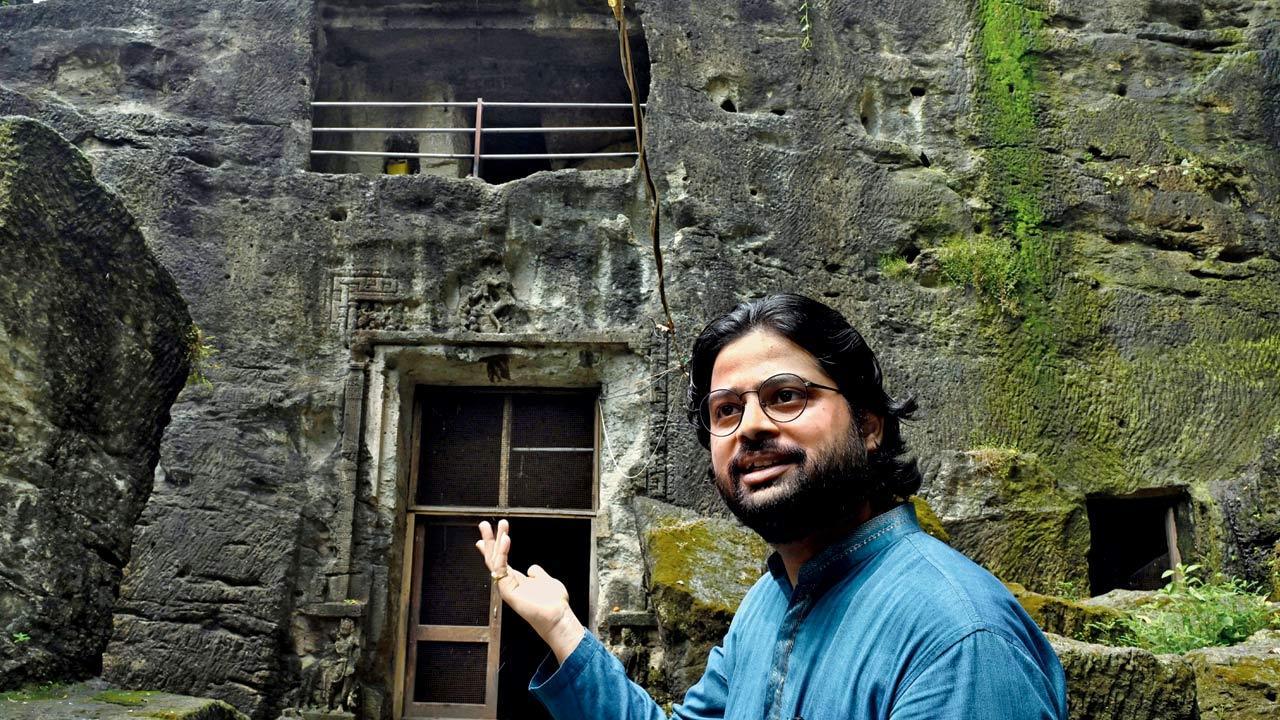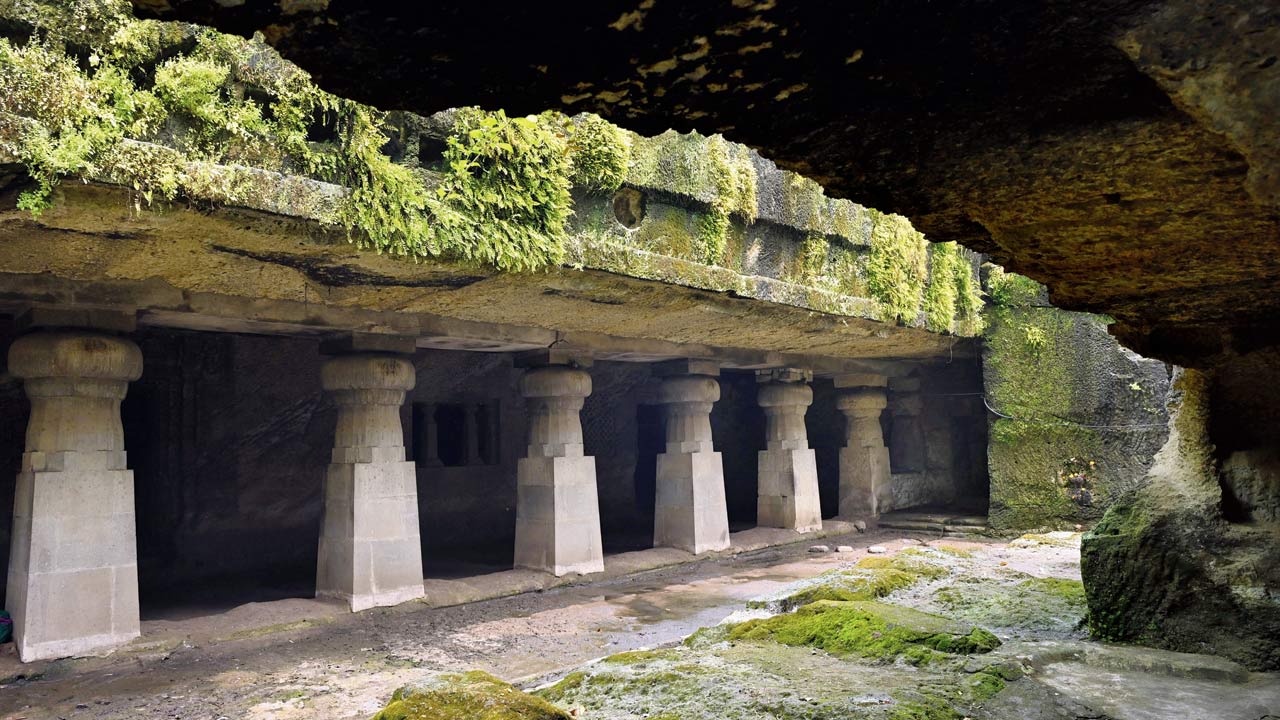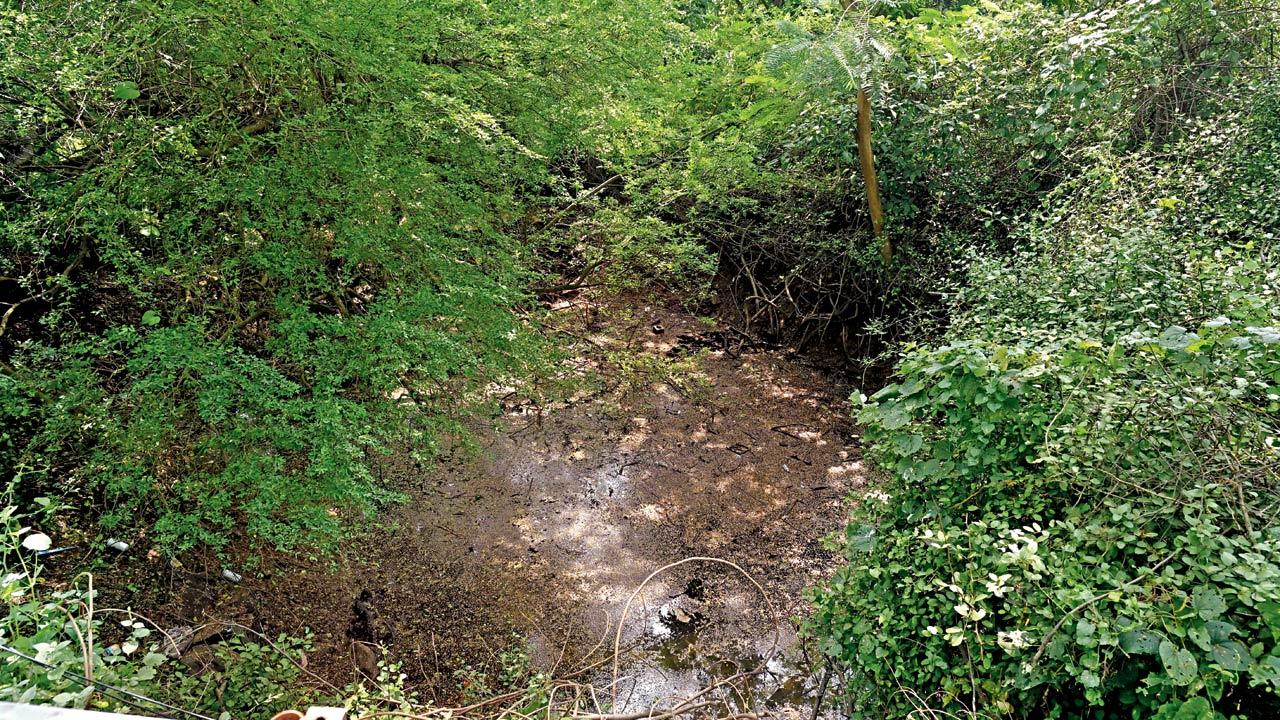A new book based on the old Shri Bimbakhyana manuscript chronicles the city’s medieval history, including how some of Mumbai’s oldest communities migrated here in 1140 CE from Gujarat

Author Sandeep Dahisarkar at Jogeshwari Caves, which finds mention in the Shri Bimbakhyana manuscript. Pics/Satej Shinde
Retellings of this city’s history often start from the Portuguese gifting the islands of Bombay to the British as part of the dowry of Catherine of Braganza when she wed King of England Charles II in 1661. Mumbai’s story, in fact, began much before that, but far too little has been documented on the city’s history before the Portuguese arrived. We know of Mumbai’s indigenous inhabitants—the Koli and Agri communities—but who were the people who migrated to and settled in Mumbai in the medieval era?
ADVERTISEMENT
It’s to fill in this blank between ancient and modern history that archaeologist and author Sandeep Dahisarkar has edited his latest, The Historiography of the Shri Bimbakhyana: The Dark Phase of Medieval History of Mumbai. It’s based on manuscripts of Shri Bimbakhyana, a Marathi account of the political history of Mumbai, as well as a record of the earliest known migration to the city in 1140 CE.
The manuscripts talk about these Marathi-speaking migrants who settled in the islands that would go on to become Mumbai, shaping the region’s history between 1138 CE to 1512 CE. That’s 375 years of history.
An interest in history would have been reason enough for Dahisarkar to write the book. But, he also has a more personal connection to this period. “There are around 66 clans who count Mumbai as their native place—one of them is mine,” he says, adding the these include the Pathare Kshatriya (Pachkalashi) community, Yajurvedi Brahmins, Suryavanshi Kshatriyas, Pathare Prabhus and Sheshavanshi Kshatriyas.
Dahisarkar says all 66 clans had originally migrated to Mumbai and Sashti or Salsette island from Champaner, Gujarat, along with Prince Mahi Bimba, son of Raja Pratap Bimba. Research shows these clans were affiliated with Raja Bimba’s court. They arrived in Paithan around 1138 CE before moving to Mumbai.
A little known fact is that modern-day Mahim gets its name from Raja Bimba—the island had been named Mahima-Bimbasthana, which roughly translates to region of Bimba. Dahisarkar’s book touches upon Mahim, but focuses on the history of Sashti island.
There were three earlier versions of Shri Bimbakhyana that had been published in 1877, in 1924 and 1973, all in the Bakhar format, which is part prose, part poetry. Dahisarkar discovered a fourth, poetic version, at the Bharat Itihas Sanshodhak Mandal in Pune that had been written by Lakshuman Prabhu. This makes Dahisarkar’s book part of Akhyana literature (narrative history) and not a Bakhar. “So far, we know of only four such manuscripts. R P Rane [who published the first version] in 1877 mentioned that he had seen such manuscripts even with East Indian families. These are important because they document pre-Portuguese history,” says Dahisarkar, adding that the 66 clans that migrated from Champaner had their own manuscripts too. Each of these manuscripts, if uncovered and studied, could shed more light on this era.
Other historical researchers have in recent years also highlighted the role of Mumbai's other original residents - Agris (saltpan workers), Sonars (metalmsiths), Kumbhars (potters), Bhandaris (toddy tappers), Kolis (fisherfolk), Kunbi (agrarians) - in shaping the city.
However, Bimbakhyana is the only available Marathi text from Maharashtra which comes from the dark phase of the invasions, a period after the fall of Yadavas with less historical sources, says Dahisarkar, adding, “It is the oldest text which highlights the concept of 'Maharashtra Dharma' for the first time.”
This book is a tribute to Historian V K Rajwade who had edited and renamed the manuscript of Bimbakhyana as Mahikavatichi Bakhar in 1924. Dahisarkar has published his version of the manuscript after a gap of 100 years.
He has been researching Bimbakhyana for 16 years. Elaborating on why the medieval period of Mumbai takes longer to research, he says, “We find descriptions of this period only in Marathi and that too in two manuscripts. We don’t have anything else except the recently discovered Hambirrao inscription from BARC.” He highlights that the BARC inscription is of importance as it provides archaeological evidence confirming Mahim as Bimbasthana, offering proof that Raja Bimba was not just a mythical king.
Another interesting aspect of the book is the specific use of Marathi words. “Since this is the history of Mumbai, I wanted people to use Marathi terms instead of Hindi,” he says. Dahisarkar has also added a glossary of old Marathi words with diacritical markings and meanings in English, to help future study on the subject.
Jogeshwari Caves

The sixth-century caves are not as well-maintained as hoped, but as one of the earliest Hindu cave temples, this shrine to Shiva is worth a visit. Head to Gupha Tekdi, Jogeshwari West to see this historical landmark.
Brahma Kund

A few steps away from Mukteshwar Temple in the Madh Island, you can see the remains of the Brahma Kund, where sacred bath rituals were performed.
Mukteshwar temple

A key medieval-era Shiva temple in Mumbai’s history, Mukteshwar temple is located at Madh Island. The locals call it Killeshwar Mandir owing to the Madh Fort behind it.
Haraba Devi temple

Sitting on a hill on Madh Island, the Harbha Devi temple stands out with its vibrant yellows and reds. Inside, there are idols of Harada Devi, Sitla Devi and Haraba Devi.
Remnants of the medieval era
Sandeep Dahisarkar’s book offers a glimpse of the revenue and taxes of that period with original Marathi names of villages that were once part of the Malad and Marol administrative subdivisions. Some places mentioned in the manuscript exist to this day.
The book has been published by Aprant Publications, Pune (094036 05783)
 Subscribe today by clicking the link and stay updated with the latest news!" Click here!
Subscribe today by clicking the link and stay updated with the latest news!" Click here!







